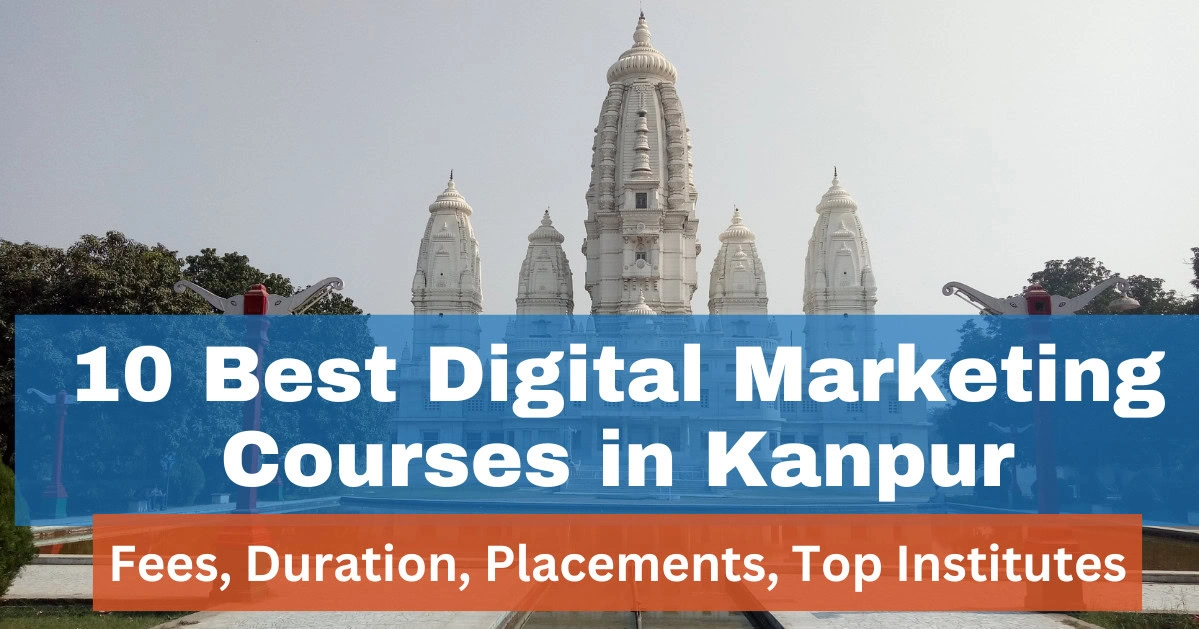15 Steps To Start and Scale A Niche Market With Google AdWords
Trading money for ranking on Google’s top position for targeted keyphrases or keywords for a specific location is Google’s Adwords contexts. Interested Marketers drive sales through PPC all across the web. Google Adwords is one of the top 5 most profitable paid advertising for more than 700% ROI potential. Investing in Google ads is significantly profitable because the intent and needs of searchers are high and clear.
Over 80% of companies use Google ads and more than 84% of companies are planning to use Google ads in 2024 according to an article published on Feb 12, 2024, by Matthew Gibbons, lead data and tech writer on WebFX.
To start advertising in a niche market, selling products and services using Google ads, digital marketing professionals are required to pay attention to some crucial and fundamental questions such as How to research consumers. What are the key filters for the segmentation of the audience? How to create relevant ads and optimize ads? What is a small and risky audience size? Etc.
In the guide for starting and scaling in a niche market using Google AdWords, we are covering 15 fundamental steps to learn about customers, segmentation, filling information and supply gaps, uses of Google AdWords, critical thinking tips for ad optimization, copywriting and KPI evaluation for Google ads. Education on the fundamentals of search engine marketing helps professionals stay ahead of the curve and extract the profit out of campaigns.
1. Figure out your customer
Understanding and capturing customers includes almost every form of marketing campaign. Before Investing in ads invest through research to discover the patterns, needs, and behaviors of customers in the niche.
Niche markets are a calculated risk, one that should be played out well and researched well in advance before making a foray into it. In point 13, we share a few tips for researching customers and culture.
2. Customer segments for running personalized campaigns
Divide the masses into various chunks to serve better relevance of context in ads based on needs, intent, demographics, etc. Go and learn as much as deeply as possible.
It’s not enough to understand the basic segmentation. It’s always good to know the nitty-gritty of a niche market.
3. Fill in the gaps left by others
Learn about the gaps in supply in the presence of demands in small to smaller contexts. The most important job in a campaign management process in Google ads is to find out the unfulfilled demand for information, relevancy, and certainty of a solution to a problem. Discover, re-make, test, and repeat the process over and over again.
Just meeting the requirements of the customer in a niche market isn’t going to cut it. Close potential gaps in your service. Have a strong unique selling proposition.
4. Leveraging the power of Google Adwords
The top 3 paid ads in Google search results receive 41% of the clicks, on average. Google ads provide 800% ROI according to Matthew Gibbons from Webfx.
Adwords can help in this respect immensely. Since we are looking at small niche markets. Since AdWords is keywords specific, it gives you the power to reach an intended audience and consumer in a much better fashion versus other channels such as social media.
Hence, a significantly profitable opportunity is waiting for you in the world of PPC.
5. Use AdWords to Drive Clicks to Leads to Sales
79% of marketers of total global marketers state PPC is vital to their business according to a report by Rohit Shewale on February 18, 2024, from Demand Sage.
Using AdWords for making a foray into niche markets, means having the flexibility to channelize the focus on your intended product, at the same time keeping a close tab on your budget.
6. Reverse engineering, back to the drawing board
Find and generate ideas from top-performing ads from competitors. Running a new campaign begins with learning about consumer psychology, intent, and demand. And the best way to learn about consumer intent is by studying the competitors and their advertisements.
Like in any business, it is vital to know what the competition is up to. Especially since smaller market space can be quite competitive. Sharing a Quote from Jake Smolarek (business coach) about marketing and consumers below:
7. The no-mans land scenario
Observe and search for healthy competition. Having no ads or a few ads is an indicator of small market size and tiny profit margins in advertising.
If you are one of those people who are about to set up a niche or are thinking of venturing into a small market space, beware of the “coast is clear” sign.
“One may feel privileged when one does not encounter competition.”
This is great if your profits keep pouring in and you really have a hands-down monopoly, or if you really are the only player in the market. It is always a good idea to keep a weather eye on the horizon. Keep a tab on the competition, having other players in the sector means that the sector has a healthy potential for developing further.
Sometimes, if you notice no ads, beware that the market may be too small, or it may be so that there are simply not enough numbers to make it count.
8. Reverse engineering continues
Think critically to reverse engineer the bidding and quality scores. Observing the higher search volume, sticking to the intent using various key phrases for an extended period converts clicks into leads in the worlds of Google Ads.
Look for higher search volumes from critical keyword searches. It is indicative of a potential audience and numbers waiting to be converted.
The potential for such keyword searches can be gauged by the number of advertisements in AdWords. The phrase or keyword occurs in one or the other form. The longer the advertisements with similar keywords keep running the better your chances of playing around with combinations of keywords and phrases. This helps to capitalize on the existing popularity based on the search statistics.
9. Think again. Look again
Expand your product, and service market awareness. Research and explore the best-selling products and services in your targeted niche. The overview of popular products and services from advertisers reflects the demands, culture, and intent of consumers.
The number of competitor advertisements on AdWords may also be used as an indicative marker. It helps figure out what kind of money can be made in that niche.
Check out the services and products that others are offering, in order to know what people are already buying. What is missing or even how you could fill in gaps and reshape the niche completely? This may help with future product creation and positioning of the existing ones.
If it is not freely available, it may be the next big money-making idea.
Free material is not always good material. So peddle the idea of a fair price for good quality.
10. Watch out for these basic strategies of Google Adwords
Strategic execution of fundamentals of Adwords and digital marketing skills is effective in every niche. Paying attention and applying basics of Google AdWords such as average CPC, targeted phrase or keywords, Location, quality scores, and bid amount.
Average CPC or Cost-per-Click shows the focus on the investment of competition. The average CPC gives hints to strategically position your products and services.
A high average CPC with 1 to 10 competing advertisements should be a good situation.
A focused search in a larger niche may yield better results. An existing market is easier to tap, but building one from scratch takes time and patience. Hence, it depends on what kind of niche market you decide to venture into. Good research and selling strategy are the key to advertising with a wonderful platform like ad-words. To position the ad better, keep the quality score higher than the bid score.
Remember, every business is a unique model one may resemble the other, but there is no one-size-fits-all. So work hard, be honest, and be flexible.
11. Take Inspirations From Organic Search Results Title & Meta Description
Scan the top 5-10 organic search results for the keyword. Organic search results show a wider deeper sense of intent optimization. Pay attention to the Title tags, Meta tags, or image packs ranked for Keywords. Sort out nouns, verbs, and adjectives and make a version for your ad campaign to test. To make a successful digital marketing campaign, testing is the most fundamental practice. If you lack it you will have tons of revenues and opportunities on the table.
12. Showing Up is better than showing hacks
Having a consistency of showing up for a location and groups of intended people with similar intent-based keywords increases conversion rates as mentioned in point 8.
Showing consistency for one solution is a fundamental marketing strategy for almost every kind of paid advertising, organic marketing, or other traditional marketing. Small little tricks and hacks are useful in the short run. However, you want to make the product or service be known within a niche market. Hence, showing that even if they ignore now, and improve the product, service, and advertisements, they are going to show interest as a matter of persuasion.
13. Invest Time or Money to analyze Visuals, Trending topics, Top-rated experts
Pay attention to the contents the niche market users are iterating. Watch and sort out the top-performing organic posts across social platforms and queries with high search volume, long key phrases, and Google trends. Often, massive demand and interest shift to their marketing of the top-rated expert’s opinions, content, and product launches. Observing the top creators, website owners, and bloggers, in a niche gives massive conceptualization about the dynamic of the industry.
14. Apply Copyediting From Title to Image, video, and Landing Pages
A Google ad without copywriting is similar to a book without a book cover.
Evaluate the consumer likes, dislikes, goals, and desires to make the copy relevant to the demand of the consumers and searchers. A basic copywriting tip applicable to Adwards is-
“Sell the results, not the process, problems”
15. Analyze KPIs and Adapt Accordingly To Scale
Aim to run a cost-effective Ad campaign using performance indicators after every session. Check and evaluate the clicks on various titles or keywords for similar products in similar locations.
Understanding KPIs for campaigns is functionally cost-effective and progressive for all kinds of digital marketing skills. Evaluating KPIs for Google ads, Facebook ads, or other social media ads or even for organic content creation is an effective practice for all digital marketing professionals. It helps to make the campaign profitable and enhances the individuals’ expertise in the skillset.









The “no-mans land” scenario could be how you describe it, but it could also simply be an opportunity for an advertiser. The smart thing is to run the ads, measure the results, and react accordingly.
Thank-you for your inputs Frank.
Thanks for ur Niche Market With Google Adwords Article! very informative.
Thank-you for your appreciation Kumar.
This article is really going to be a lot helpful. Do you think these steps are applicable to B2B as well as B2C adwords campaigns?
Adwait, it all really boils down to the kind of product or service you are selling. These pointers are not hard and fast, you always have room to innovate. If you look at it from a business model point of view, the context would matter before you could implement any strategy.